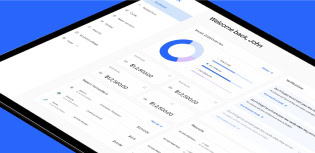How expense management software powers scalable business growth

As companies grow, outdated finance processes become a serious liability. Manual receipt collection drags on for days, if not weeks. Month-end close turns into a fire drill. And finance teams spend more time manipulating spreadsheets than driving strategy.
Research firm IDC finds that companies lose nearly ⅓ of annual revenues due to operational inefficiencies. These productivity gaps translate to delayed purchases, incorrect reporting, audit risk and restricted cash flow. Industries with tight budgets or compliance requirements are especially susceptible.
At a certain point, manual processes break. This guide shows how modern expense management software helps finance leaders regain control, improve visibility and scale operations – minus the extra headcount.
Why growing companies need expense management software
Growth-stage businesses are often in transition, whether adding new team members, expanding to new markets or preparing for funding. With each milestone, finance complexity increases.
What worked at $2 million in revenue doesn’t scale at $10 million. Manual processes become a drag on productivity, visibility and decision-making just when speed and accuracy matter most.
The hidden costs of manual expense management
Direct costs
- Decreased worker productivity
Without automation, finance staff spend hours chasing down receipts, entering data, following up on approvals and reconciling reports. That lost labor on manual, repetitive tasks costs the organization in countless extra man-hours.
- Unapproved or fraudulent spend
Finance staff have no control over employee spending other than card limits. Even with expense policies, employees can make accidental out-of-policy purchases or even commit fraud.
- Increased headcount
Using manual processes, there’s a finite amount of work each employee can complete. For growing organizations, that means increasing headcount based on workload. For the number of expense reports processed, the finance team needs a set number of employees.
- Missed savings opportunities
Because they are always playing catch up, finance teams don’t have the time or visibility to evaluate discounts. A vendor might offer 5% off if invoices are paid upfront, for example. But that would mean staff have time to read the terms and make the payment upfront.
Indirect costs
- Audit risk
Manual expense reporting processes have high error rates, and errors get flagged for audits. Companies spend heavily if they get audited, both in terms of audit fees and employee time.
- Delayed decision-making
Stakeholders can’t see spending as it happens. When they have spending data, they’re in possession of historical (not current) financial reporting data. So they’ll miss that project going over budget or the ability to change course based on spending patterns.
- Employee burnout
Manual, repetitive processes take a heavy toll on finance staff. Working long hours on low-level tasks may decrease their performance further, and even drive them to look for other employment.
- Competitiveness in the market
Businesses have to keep one step ahead of the market to remain competitive. Manual expense management makes that impossible. When you’re always chasing historical data, there’s no way to look forward. You don’t have the time or the headspace to consider an expansion or a pivot.
How to choose expense reporting software that grows with you
There’s no shortage of finance automation tools on the market, but not all solutions are built to scale. As you compare platforms, look for tools that go beyond simple expense tracking.
Robust automation
Month-end close automation can eliminate the biggest pain points in expense processing. Look for workflows that automate receipt capture, GL code tagging, receipt matching, approval routing and the like. Anything that’s currently manual and repetitive is a candidate. Look for a platform that solves for as many of these pain points as possible.
Customizable spend controls
Effective spend controls should offer a variety of formats for restricting spending, for any card choice (prepaid, virtual or corporate card). Finance teams need to limit spending by department, merchant, cardholder, location and day & time. And spend controls should still have some flexibility. Employees requesting an exception need to do so in the platform with an audit trail for tracking purposes.
A powerful mobile app
Expense management apps should have similar functions as the PC version of the platform. It’s helpful for employees to be able to submit receipts and expense reports, but managers need to review and approve via the app as well. Some functions like admin setup may not be available in the app, but look for apps that make functioning on-the-go easier for all parties.
Real-time expense tracking
Most expense reporting platforms build a set of standard reports and data views. But what they offer today and what you have (even if it is out-of-date) may not match up. You’ll want access to your current data outputs and any you need for future planning.
And if your company is in a highly-regulated industry, check to see if the platform has custom reporting. A detailed understanding of nonprofit reporting may mean that the platform has pre-built reports for regulatory bodies and grant funders.
Integrations with accounting software
Integrations pre-map expense data to the correct fields in accounting software. If this is a big time-suck for your company, it’s critical to know if your accounting software is supported. And take a look at their support documentation to understand how it works. It should be a straightforward initial setup with little intervention over time.
How PEX helps automate, control and scale finance workflows
At PEX, we designed our expense management platform to support growing businesses. Our platform replaces manual, outdated processes with smart, customizable tools that scale your company’s finance function.
Automated workflows that save time and reduce errors
From initial purchase to expense approval, PEX leverages automation at every step. Employees can snap photos and submit receipts via email, text and mobile app. The system applies GL codes based on GL code-to-merchant mapping. AI-based receipt matching connects receipts to their applicable transaction records.
Expenses flow directly to the appropriate managers through automated approval workflows, where they can approve or decline expenses. And if employees are out-of-compliance with receipt submission, card purchases are automatically declined until they submit receipts.
Automated workflows reduced Family in Christ Community Church’s reconciliation time from 5 hours to 20 minutes per month.
Custom spend rules that curb out-of-policy spending
PEX’s custom spend rules empower finance teams to predetermine employee spending, with no surprises after the fact. With unlimited physical and virtual cards, employees can easily have their own card so finance teams can separate and allocate expenses accurately.
Each card is subject to spending restrictions set by PEX administrators. They can restrict spending by monthly limit, cardholder group or department, merchant name or type, location, day and time and individual card. And if there’s an issue, cardholders can request an override to spend rules through the platform, with a fully-documented audit trail.
Spend controls helped NewCorp increase cash flow by restricting purchases according to charter school regulations.
Real-time visibility that speeds up decision-making and reporting
By ingesting receipts and transaction data in real time, PEX empowers finance teams to understand spending as it happens. If a project risks going over budget, finance leaders have choices. They can change spend rules, reallocate budget or request funds to cover the gap.
The PEX platform also makes audits and regulatory reporting faster and easier. Finance teams have the most current information available. There’s no digging for receipts or other financial data – they can pull it once from PEX and submit it to the appropriate parties.
Compass to Care has access to the real-time spending patterns of beneficiary families, empowering them to assign trips to future potential grants.
Seamless integrations that accelerate reconciliation
We’ve built our integrations to create a seamless connection between expense management and accounting data. Customers can auto-sync or manually sync with NetSuite, Sage, QuickBooks, Blackbaud and more. By directly linking expense data to accounting records, finance leaders save countless hours closing the books each month.
PEX’s integration with accounting partner Greenslate saved Wheelhouse Group 4 hours per month on closing their books.
See the ROI of scalable finance automation
The examples above aren’t isolated incidents. PEX customers see wide-ranging benefits like:
- 25% saved 10+ hours saved per month
- 4.01 minutes saved on average getting receipts from employees per transaction
- 3.47 minutes saved on average uploading receipts per transaction
- 2.92 minutes saved on average adding GL codes to each transaction
- 60% saved money using custom spend rules
For a sample customer with 25 cardholders and $360,000 in annual spend, the time savings above translates to 657 hours saved per year. Based on the cost of a fully-burdened accountant, businesses stand to save roughly $35,476 annually by using the PEX platform.
That’s a 10.85% effective return on spend, which far exceeds the 1-2% typical of traditional bank cards. With PEX, finance leaders can turn day-to-day spending into strategic value.
Future-proof your finance tech stack with PEX
As your organization evolves, your finance tech stack should, too. The best expense management platforms scale with your business as it grows. With the right software, you can gain visibility, save time and take control – all without hiring a bigger team.
If your finance workflows are stuck in the past, it’s time to export PEX’s expense management platform. With automation built for scale, enterprise-grade features and proven ROI, PEX empowers your team to do more with less.
Ready to scale smarter? Book a customized PEX demo today and learn how.
Similar resources
Opinions, advice, services, or other information or content expressed or contributed here by customers, users, or others, are those of the respective author(s) or contributor(s) and do not necessarily state or reflect those of The Bancorp Bank, N.A. (“Bank”). Bank is not responsible for the accuracy of any content provided by author(s) or contributor(s).











